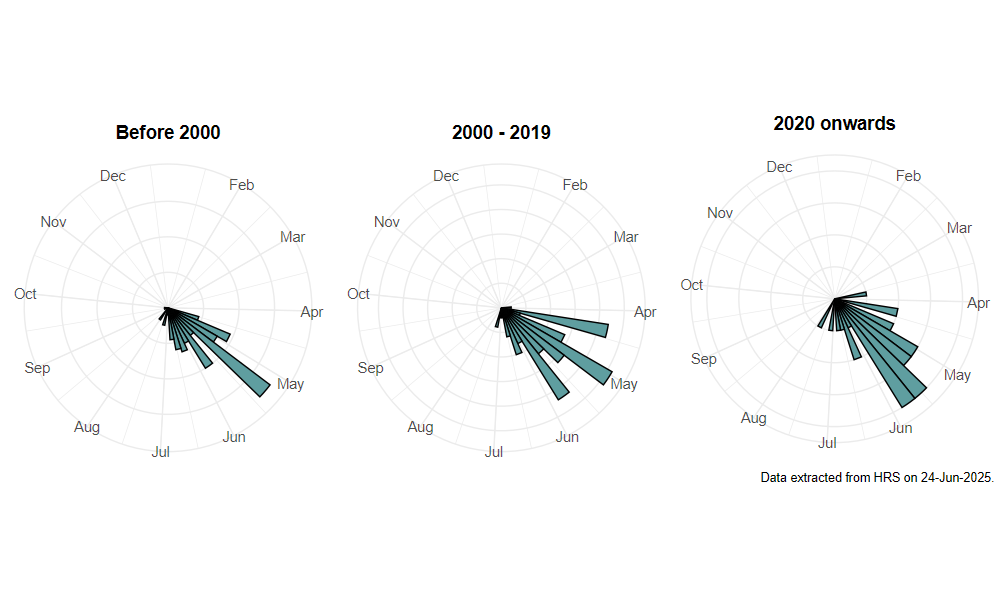Parasyrphus malinellus (Collin, 1952)
Identification
Identification difficulty = 4. ![]()
![]() according to Ball & Morris, 20241
according to Ball & Morris, 20241
Synonymy
Syrphus malinellus Collin in Coe(1953)2.
Biology
The larva is undescribed, but larvae of this genus are usually arboreal predators of adelgids and pine aphids. Adults are found along rides in conifer plantations, and in partially-coniferised deciduous woodland, where they fly amongst the conifer foliage at some height, descending to visit flowers.
Flight period
The following plots show the number of unique records per week excluding those reported to be of immature stages.

Distribution
Described as new to science in 1952 on the basis of British material caught between 1932 and 1942. It occurs widely across Britain and is now known to be much more abundant in Scotland than data suggested when the Provisional Atlas (Ball & Morris, 2000)3 was published.

Trends
The following plots show the Frescalo TFactor vs year and a map of the rescaled frequency (all records) for the species.
-
Ball, S., & Morris, R. (2024). Hoverflies of Britain and Ireland. WILDGuides (3rd ed.). Oxford: Princeton University Press. ↩
-
Coe, R. (1953). Diptera: Syrphidae. Handbooks for the Identification of British Insects, 10(1), 1–98. ↩
-
Ball, S., & Morris, R. (2000). Provisional atlas of British hoverflies (Diptera, Syrphidae). Huntigdon: Biological Records Centre. ↩